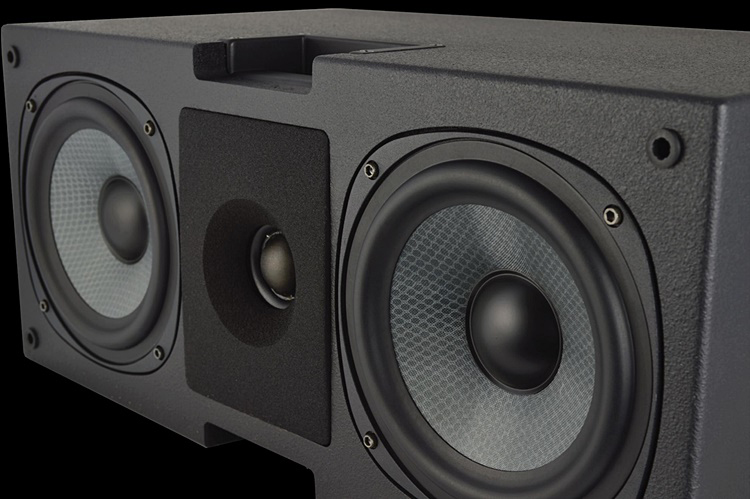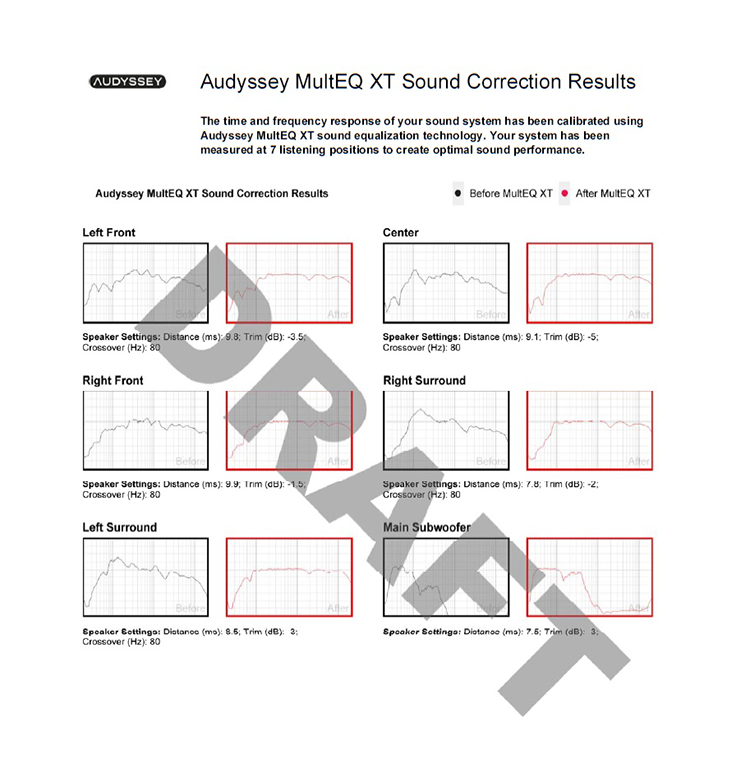I reviewed a 5.2-channel 535 dARTS system. The intent of this system is to allow the room boundaries to melt away so all you are left with is a pristine soundfield. Based on my first hand listening over a number of months, I can state unequivocally that it is “Mission Accomplished” because this dARTS system is top to bottom one of the best I have heard.
dARTS 535 Surround System
- All-inclusive turnkey surround system
- Powerful amplification
- Powerful amplification
- Audyssey MultEQ Pro room correction
- Flexible speaker arrangements
- Full-range response
- Cohesive sound field
- System really places you in the middle of the action
Phase Technology has developed a complete surround system with its own unique approach to room correction that is dubbed the Digital Audio Reference Theater System or “dARTS” for short. There are several dARTS systems available from floor-standing to small box to in-wall/in-ceiling options. Each system comes complete with a separate DSP/power amplifier.
AMPLIFIER DP 4000 V2
Frequency Response (±0.5 dB):
20 Hz – 20 kHz
Channels:
16
Crossover:
Parametric DSP (Adaptive)
Harmonic Distortion:
0.05% @ 1 kHz, 1 W
Power Output (8Ω):
125 W x16
Power Output (4Ω):
250 W x16
Inputs:
8 Balanced (XLR), 16 Unbalanced (RCA)
Binding Posts:
Gold-Plated Screw Terminals
Power Requirements:
120/240v AV; 50/60 Hz
Dimensions:
5.625″ H × 17″ W × 17″ D
Weight:
21 lbs.
535 CUSTOM BOX SYSTEM MAINS
Frequency Response (±3 dB):
20 Hz – 20 kHz
Possible Configurations:
Scalable from 5.1 to 9.2.4 or higher multi-channel systems
Total System Power:
250 W x 16 (500 W /speaker)
Subwoofer Power (Peak per Each):
1500 W
Minimum SPL (8,000 cu. ft.):
105 dB (THX Reference Level)
Dimensions (Mains):
12″ H × 12” W × 7.5” D
Dimensions (Center):
7″ H × 18” W × 9.25” D
Dimensions (Surrounds):
15.25″ H × 10.5” W × 55” D
Dimensions (Subwoofer Option 1):
15.5″ H × 14.5” W × 15” D
Dimensions (Subwoofer Option 2):
28″ H × 14” W × 17” D
MSRP:
(Depends on options, check with your local dealer)
Company:
SECRETS Tags:
dARTS, Digital Theater, Phase Technology, Audyssey, Audyssey MultEQ Pro, Bookshelf Speakers, Main Speakers, Subwoofer, Soft Dome Tweeter, MSE Audio, Surround System Reviews – 2017
I am reviewing a 5.2-channel 535 system (2 ~ DCB 535 LR’s, 1 ~ DCB 535-C, 2 ~ DCB 535-SURR’s and 2 ~ DCB 112 S powered 12” subwoofers). The amplifier is the 16-channel DP 4000 V2. The intent of this system is to allow the room boundaries to melt away so all you are left with is a pristine soundfield.
dARTS Theater started as an uber digital theater system that utilized Phase Technology speakers. Now, dARTS Theater is its own entity that uses design and technology originally created by Phase Technology but under the new name.
Secrets Sponsor
The dARTS system concept got started when Phase Tech’s chief design engineer, Ken Hecht, began contemplating how to build the ultimate home cinema system. He postulated that there could be a better system concept and he set out to create one. This endeavor of his led to speaker designs with precise response characteristics. Then he coupled these speakers with a 16-channel Class D amp with included DSP. He couldn’t use any of the not so great room correction packages on the market so he teamed with Audyssey to develop a bespoke version of their MultEQ Pro package.
These dARTS Systems are just that – a system. You get yours as a turnkey installation from your local dealer. I would venture that at least 80% of the systems they sell are installed in a custom theater environment. All the speaker models in the extensive lineup are matched phase and voicing so you can mix and match them to your heart’s desire. Maybe you want free standing mains but in-wall surrounds. That can be done. Or all the speakers are box type, doable. And so forth.

So these systems are obviously unique because all the DSP is in the Class D amp as opposed to being in the surround processor or receiver. And this is one of those amps that never converts the signal back to analog – not unlike the NAD Masters Series products I reviewed two years ago. It does, of course, convert everything to digital to perform its magic. Did this conversion degrade the sound? I can’t say because there was no way to bypass the ADC. I will say that I never felt the sound was overtly analytical or grainy the way you may hear with poor quality conversions. In fact, the thought never crossed my mind after the first few days of use.
I believe the people behind the dARTS System really like being in control as much as possible. They control the phase of the speakers. They control the frequency response. They control things by devoting an individual amplifier channel to each driver. They control things through their use of a high quality room correction package.
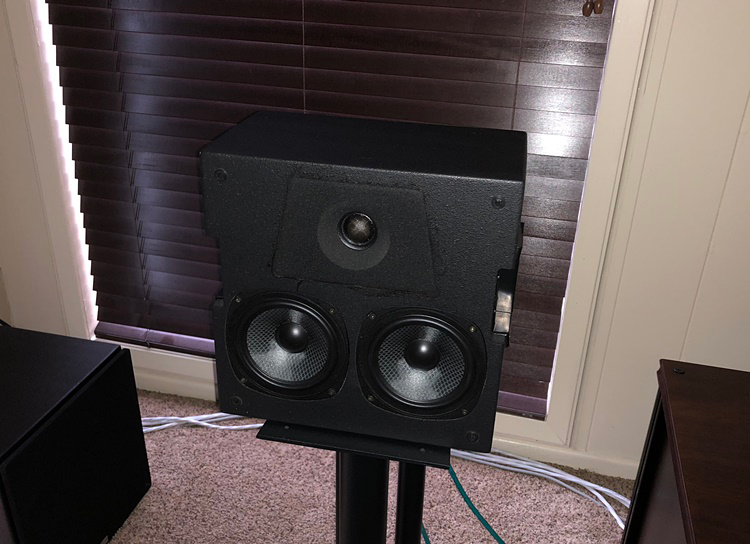
All the speakers in the 5.2 system I reviewed are sealed box type except the two 12” powered subs which operate as bass reflex via a single 12” passive radiator in each box. The main drivers in the satellites are 5-1/4” diameter and appear to be woven Kevlar®. The tweeters are 1.25” soft domes in the front channel speakers and 1” soft domes in the surrounds. The boxes are flat black because they are designed to be mounted behind a projection screen and out of sight. The cabinets are extremely rigid and inert.

I got two 12” powered subs with the 5.2 review system. Each sub is rated at 500 watts nominal, 1,500 watts peak.
Let’s get back to the roots of the system’s design and concept. I do agree that room correction is most welcome in multi-channel systems as opposed to a stereo set up for reasons I do not have space in this review to cover. For the best room correction possible one would limit the variables so the room correction is only applied to the room and doesn’t need to correct the speakers themselves. dARTS addresses this in several ways. It begins with their speakers being meticulously designed, built, tested, and calibrated to be within ½ dB of a reference standard. All the speakers in this system are validated to meet this standard before shipping from the factory.
The next part of this is to control the phase relationship of the drivers among themselves. This is achieved through the use of active crossovers that do not impart phase non-linearities to the system’s response.
Secrets Sponsor
The third method employed to ensure ultimate control is to mate each driver to its own amp channel. This is a step that I would not bother taking but I definitely understand the rationale. The biggest downside is that you need a lot of speaker wires to put this system together and that makes the cost go up by a fraction. But it is a great system for a control freak.
So now that you know the native response of your speakers and all that is left is for you to stamp out the anomalies associated with the room response. Here is where the magic happens. The Audyssey MultEQ Pro system employed here is the highest Audyssey package for a home environment. I was pleased to see that it came with an Earthworks condenser mic which was similar to the mic I use for speaker testing. My mic has a calibration file that corrects certain frequencies by around ¼ dB and no more than ½ dB. It is essentially flat from 20 Hz – 20 kHz even before calibration and I suspect the mic that comes with the dARTS system is equally accomplished.
One feature of this system is that it really strives to make every listening position sound like the sweet spot. To begin with, the center speaker is an MTM arrangement that sits on its side like most out there. It differs in that it is essentially a 2-1/2 way design. This reduces off-axis lobing effects. But the real trick is how the DSP is applied in the time domain. Let’s say you are sitting 10’ off axis. The sound from the furthest main speaker would take a little longer to arrive at your position. So the specific equalization for that channel changes over time to even out the response irrespective of where you are sitting. This isn’t the only system that does this, but it may well be the most effective I have heard in regards to making all the seating positions to sound correct.
One last point is to note that the amplifier is apparently very powerful. It is capable of producing THX reference levels in rooms up to 8,000 cubic feet. It is also a Class D design and among the best sounding Class D amps I have auditioned. Ken says it is important to get the filters right on these amps and I think he may be on to something. Suffice to say that this system impressed on music equally as well as on movies. That is saying a lot for a Class D amp.
Ken Hecht personally set up this system in my room. He placed the speakers around the room in more or less the same spots where I place speakers all the time with the exception that he had a second sub that was placed along one side wall. The main speakers were not toed-in which was a little different from my usual practice. Ken also requested to calibrate with the front screen lowered and my choice grilles on or off – I choose off. I can’t imagine how the grilles could make a demonstrable difference but, hey, when you need to be in control . . . then let that flag fly!!!
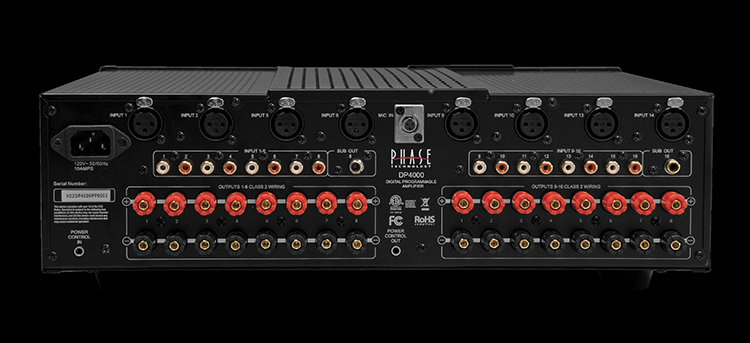
The calibration process went along very smoothly. Like most systems, you start with the first set of tests at the prime listening position which is precisely on the on-axis point. Then you run tests at the other seating positions so the system can get a readout on the response in each of those spots.
Once Ken finished taking these measurements, he set about taking a few measurements that were new to me. I am not sure what was going on exactly, but he took readings with the mic several feet higher than where your ears are. I know he takes pride that his speakers have even power response in off-axis positions, including when you stand or sit. So I suspect he wanted to verify the power response was even along the vertical axis as well to further reduce deleterious room effects.
What difference does any of this really make when the system sounded so incredibly bad ass when he was done? Hell, he could have placed the mic under the couch for all I care because whatever he did worked like a charm.
In any event, the mic was plugged into a mini XLR jack on the back of the amp. The calibration process was controlled via a laptop that was connected to the unit’s front-panel USB jack. Once the calibration was completed, the filters were burned into the memory in the amplifier.
I didn’t bench test this system because I didn’t really need to. Please see the image above. This is the before and after of all six channels taken from the Audyssey MultEQ Pro system. You can see the target curves aren’t exactly flat but I never really noticed this in my listening tests. The sound was pleasing and subjectively accurate.
What this image does show is that the after calibration response was nearly an identical curve for each speaker. (Though there were two subs in the system, they were daisy-chained and resided on a single channel in the system’s “brain”). I think these curves support the claim that the system really does compensate for the room response.
So now it was time to kick back and enjoy!
I do need to point out that the amplifier is cooled via a forced-air system. The fan was reasonably quiet but was audible during soft passages or when no music was playing. My reference amp does not have a fan so this little bit of white noise was fairly prominent at first. But once normal program material started to play, the fan noise was drowned out. If I were to install this system in a permanent theater set up, I would be sure it was isolated sufficiently to mask this noise.
The first movie I tested with the dARTS system was the ever so fun caper flick, “Baby Driver”. This movie is the sh**. It has incredible action scenes, fun music, and great acting. I think the dARTS system helped me get the most out of it too. It started with a balanced power delivery that could put out high SPL’s without any hint of strain. The backgrounds were black as could be which enhanced the already excellent musicality I heard with the enticing musical score of this movie. Transients especially stood out very naturally with no glare or hardness
Listen, this system was designed to provide reproduction unencumbered by room effects. That was the primary goal. So I will state without reservation that it indeed was “Mission Accomplished” as the room simply melted away and all that was left was the natural ambiance on the disc. I have reviewed a number of amazing surround systems over the years including some ridiculously expensive set ups and this dARTS system can legitimately stand toe-to-toe with any of them.
Next up was the Blu-ray of “War for the Planet of the Apes”. I don’t want to sound tacky, but I saw this movie in the theater and it had a synthetic character to the audio effects and even the music. That’s too bad because it sorta fouled up an otherwise decent movie. This quality was preserved on the Blu-ray and was disconcerting on my reference system. Somehow, the dARTS system improved the sound to an appreciable degree. I do not know how this was possible.
In any event, the dialogue was very clear and intelligible. Sibilants were clean and fuzz-free which further lent to the intelligibility.
The Audyssey MultEQ Pro system provided incredible realism with respect to the ambient sounds in the echoing cave scenes. I did try different seating positions and found that I could sit anywhere in the room for the most part and though the way off-axis positions were not perfect, the performance was certainly palatable and a reasonable facsimile of the on-axis response.
The battle among the humans at the Colonel’s stronghold was demo-worthy material all the way and I was further intrigued by the way the dARTS system conveyed this.
In keeping with the theme of action movies, I decided to audition the Blu-ray of the “The Hitman’s Bodyguard”. This disc is encoded in Dolby Atmos. I didn’t have height speakers in this set up so the sound was down-mixed to 5.1 in my Arcam surround sound processor.
One great thing about this movie is that the bullet, fisticuffs, and bomb sounds are not over-hyped in a Hollywood-y way and the dARTS system didn’t foul that up by adding any undue thickness.
In fact, I was very impressed by the rich yet balanced response in upper bass and lower treble. The sound had excellent subjective balance in terms of frequency response. The bass was a bit polite but clean and balanced, great for a long term relationship. At the end of the day this system had probably the most cohesive reproduction I have ever had in my home system.
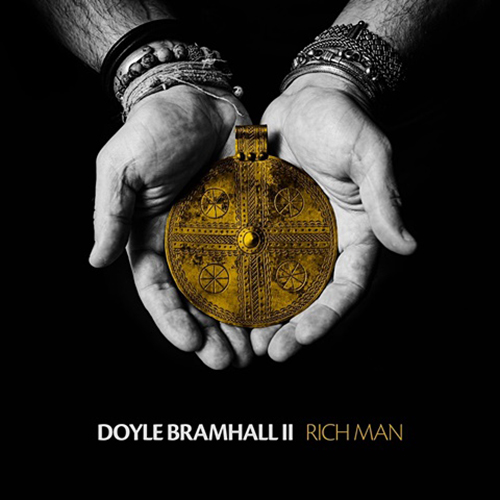
I would be remiss to conclude this review without an analysis of a little two-channel music. So how about the vinyl edition of Doyle Bramhall II’s incredible album “Rich Man”? I felt that the individual amp channels per driver led to incredible dynamic properties and an uncanny prowess with two channel music; much better than the norm for a surround system.
Once again, the sound was surprisingly cohesive and the speakers sounded wayyyy bigger than they actually were. This was a long-term impression I had of the dARTS system. This added to the impression that the height cues were off the charts!
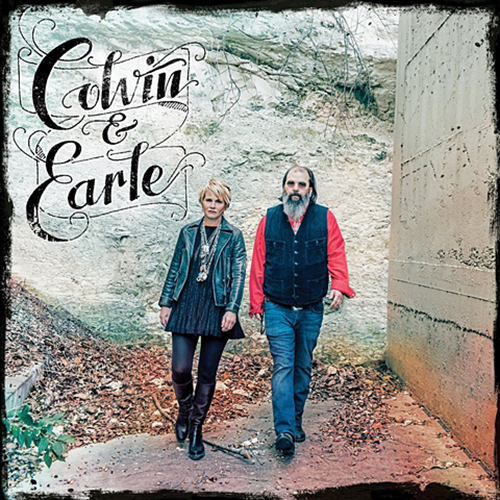
One of the most desirable qualities of these speaker was in the treble. Unlike so many speakers these days, the treble here was not etched or over-hyped. It was just musical and natural. Also, as mentioned before, the bass was polite but that didn’t mean that it lacked in extension. Both of these qualities of the bass and treble were on full display on “Colvin & Earle”.
I also noted how the cello in Ruby Tuesday had an authentic, woody quality while voices were reproduced with an uncanny presence very close to the you-are-there effect of the best two-channels systems out there.
There was one minor downside and that was that stereo music really needed to be reproduced as a 2.1 format. I tried stereo direct but it sounded thin and didn’t reproduce the bass even when I set the mains to “large” in my surround processor.
In closing, I would like to say that I really didn’t identify any weaknesses in what was a coherent presentation which remained nearly as true to the source as any system I have had the pleasure to enjoy in my own home.
Check out the DARTS 535 SURROUND SYSTEM if you are looking for excellent all-around performance from a surround sound system that literally melts away and lets the audio shine unencumbered by the room or the speakers.
- Powerful system
- Full-range sound
- Cohesive response
- Balanced power response
- Natural timbres
- Places you in the middle of the action
- Great for every size of space including those with multiple seating locations
- Individual sub channels with separate EQ
- Analog bypass
I was a little concerned that this system would not fill up my room the way I am used to hearing from the big he-man systems that I own and review. This was not the case. This system really filled my room with rich and clean sound. The system is rated to provide THX reference levels in rooms of up to 8,000 cubic feet. This is close to the size of my space and I was able to play everything to a level that anybody would agree was sufficient. Not at all bad for what can be viewed as a compact system.
But the thing with this system that impressed was more so in terms the overall balance and sense of “completeness” I experienced. This system kind of does everything right. What I mean by that is it has many strengths and no notable weaknesses. The bass is well connected to the other frequency bands. And it has excellent extension but it won’t throw you against the back wall. The treble is extended and pure but it won’t cause bleeding from the ears. The midrange is open with great clarity but it’s not at all etched or in-your-face.
So my lasting impression is of a system that does many things right and does them in ways where the system really disappears and lets the material flow forth with a liquidity that is hard to achieve at any price. I think the design and implementation of this system make a lot of sense to me in many ways and the design focus takes the performance to a very high level. Plus the system was a set it and forget it affair.
As I mentioned, I have reviewed all sorts of expensive products but none stand out more than dARTS as being able to disappear and let the music flow unencumbered by any artifice that would be native to the system itself. It was in fact the most well-rounded surround system I have ever reviewed. If I were getting ready to build a dedicated screening room for movies and music, then a dARTS system would be at the very top of my shortlist.




